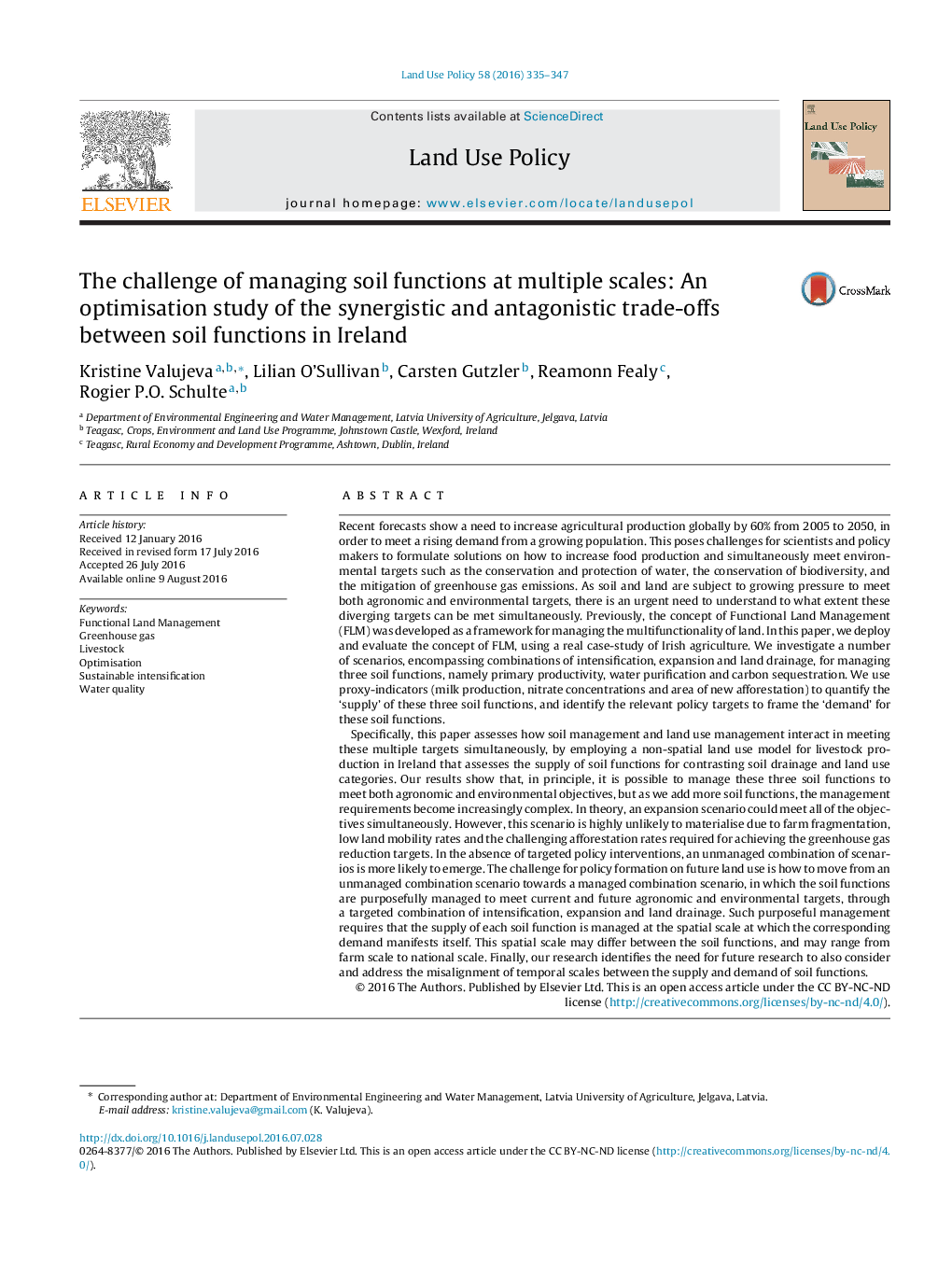| Article ID | Journal | Published Year | Pages | File Type |
|---|---|---|---|---|
| 6546900 | Land Use Policy | 2016 | 13 Pages |
Abstract
Specifically, this paper assesses how soil management and land use management interact in meeting these multiple targets simultaneously, by employing a non-spatial land use model for livestock production in Ireland that assesses the supply of soil functions for contrasting soil drainage and land use categories. Our results show that, in principle, it is possible to manage these three soil functions to meet both agronomic and environmental objectives, but as we add more soil functions, the management requirements become increasingly complex. In theory, an expansion scenario could meet all of the objectives simultaneously. However, this scenario is highly unlikely to materialise due to farm fragmentation, low land mobility rates and the challenging afforestation rates required for achieving the greenhouse gas reduction targets. In the absence of targeted policy interventions, an unmanaged combination of scenarios is more likely to emerge. The challenge for policy formation on future land use is how to move from an unmanaged combination scenario towards a managed combination scenario, in which the soil functions are purposefully managed to meet current and future agronomic and environmental targets, through a targeted combination of intensification, expansion and land drainage. Such purposeful management requires that the supply of each soil function is managed at the spatial scale at which the corresponding demand manifests itself. This spatial scale may differ between the soil functions, and may range from farm scale to national scale. Finally, our research identifies the need for future research to also consider and address the misalignment of temporal scales between the supply and demand of soil functions.
Related Topics
Life Sciences
Agricultural and Biological Sciences
Forestry
Authors
Kristine Valujeva, Lilian O'Sullivan, Carsten Gutzler, Reamonn Fealy, Rogier P.O. Schulte,
